Archive for May 2007
Kitano Odori
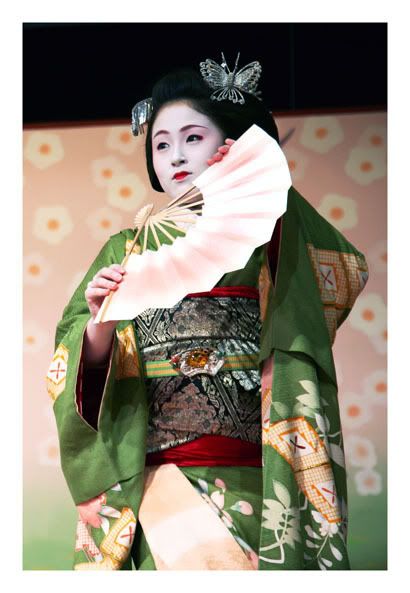
Ichimame in Kamishichiken's Kitano Odori. The geiko Umeshizu performing the role of otemae, preparing the tea.
The geiko Umeshizu performing the role of otemae, preparing the tea.
The Kitano Odori is an annual performance of traditional songs and dances by the geiko of the Kamishichiken entertainment district near the Kitano Shrine dedicated to Sugawara no Michizane and has been presented since March 1952. Geiko are indispensable as hostesses in traditional banquets, but an essential part of their duties are performances of traditional music in such tyles as Nagauta, Tokiwazu and Kiyomoto, mastery of instruments like the shamisen and tsuzumi hand-drum, and classical Japanese dance. They also must know traditional popular songs, which are an important part of the culture of the entertainment districts. Constant study and practice are vital to mastering these art forms and the Kitano Odori began as a recital to show off these performance skills, as well as being an entertaining show.
(Excerpt from Ichimame's blog)
Young Ichiteru in the role of ohikae, delivering tea to the guests in the ceremony before Kitano Odori.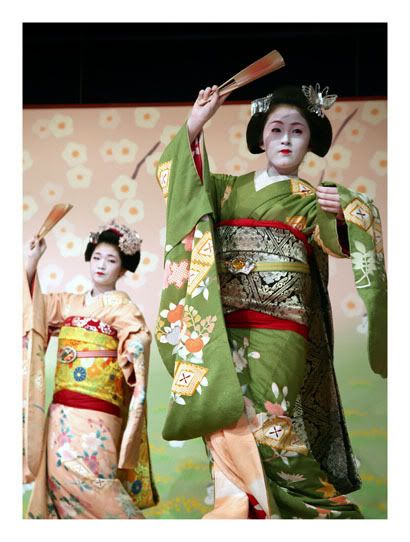
Ichimame (front) and Naokazu.
 Ichimame (front) and Ichifumi.
Ichimame (front) and Ichifumi.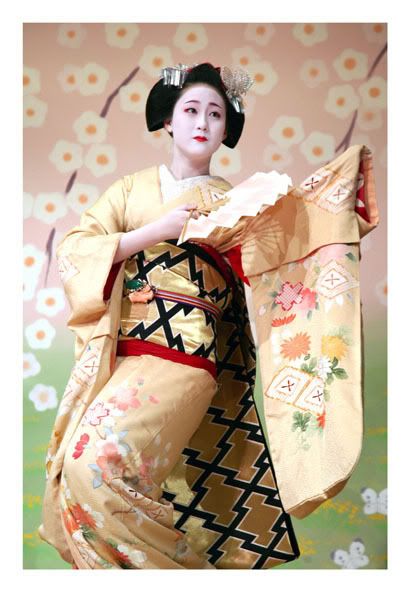
Naozome

Naosuzu

Kyo Odori: Maiko of Miyagawa
Coming Soon: Kyo Odori
Miyako Odori: Finale



Cherry Blossoms in the Kinkakuji Temple: Kinkakuji was originally built in 1397 as a villa for Ashikaga Yoshimatsu, the third shogun of the Muromachi Shogunate.. After Yoshimitsu's death, in accordance with his will, the villa became a temple of the Rinzai sect. The official name is Hokuzan Rokuonji, but people have called it Kinkakuji (golden pavillion temple) ever since it's three-story pavillion was covered in pure gold leaf.
 Katsuyuki and Ayakazu.
Katsuyuki and Ayakazu. Koyuki , Terutoyo, and Kotoha
Koyuki , Terutoyo, and Kotoha

Kodomo No Hi

For Kodomo No Hi (Children's Day), families raise colorful carp-shaped "Koinobori" flags, one for each member of the family. The largest carp flag represents the father, followed by the mother and smaller carp to represent children.
May is the month of purple flowers, with irises and wisteria crowning the countryside with kingly purples and violets. The iris, or shoubu, is another famous symbol of Kodomo no Hi. In Japanese, shoubu means both iris and military spirit (although the Chinese characters are different), and because the shape of the leaves resemble swords, they are used to decorate the samurai style Go Gatsu Ningyo (5th Month dolls).
 Kashiwa mochi and irises. Image by att.japan
Kashiwa mochi and irises. Image by att.japan
No holiday would be complete without its special treats, and Kodomo no Hi is no exception. Children are treated to kashiwa-mochi, a sweet rice cake filled with even sweeter bean paste and wrapped in an oak leaf. Chimaki, a sticky sweet cake wrapped in bamboo leaves, is also very popular.
Summer is here! Happy Kodomo No Hi (^-^)/
Watching Fireflies at the Kiyotaki River: Miyako Odori
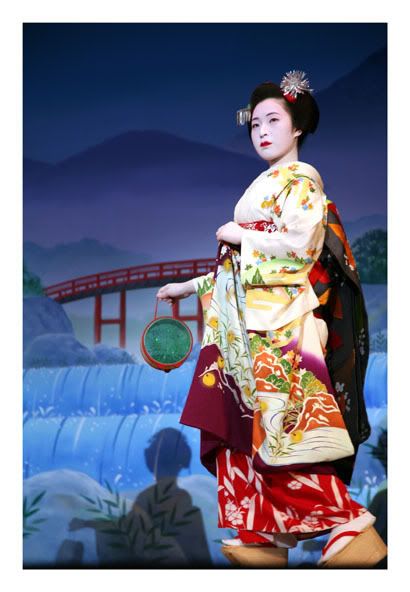
Maori, catching fireflies in a remarkable kimono with a unique design depicting the famous zen rock garden of Ryuanji Temple on ther long, flowing sleeves.
 Konomi and Maori catching fireflies.
Konomi and Maori catching fireflies.












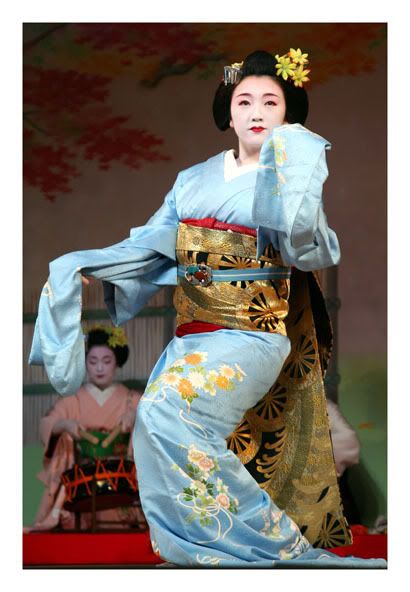

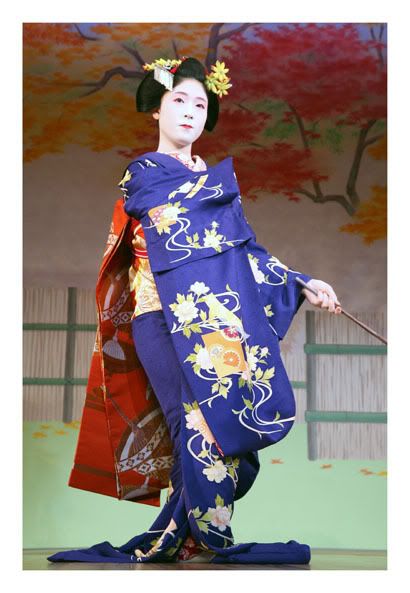
 Fukuya and Kimika
Fukuya and Kimika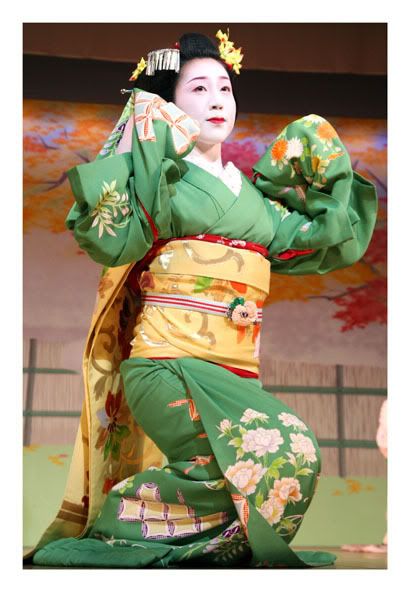

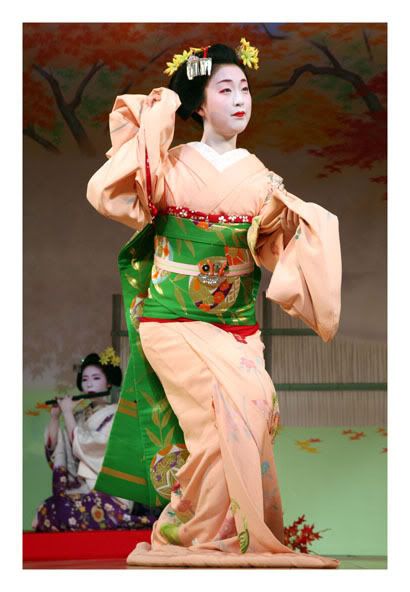

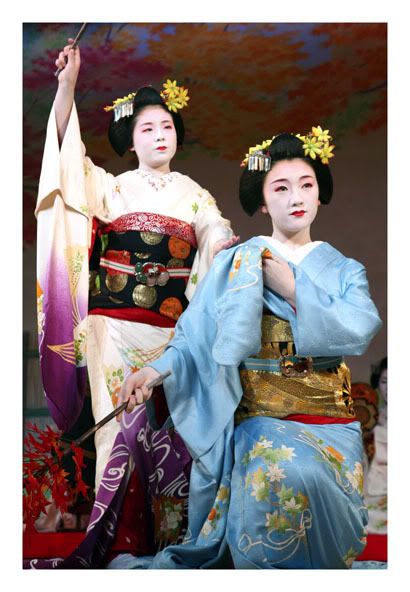
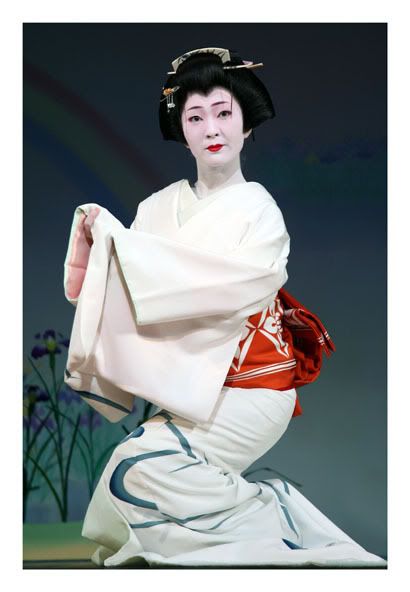
 Toshihana and Fukunami with a senior geiko.
Toshihana and Fukunami with a senior geiko.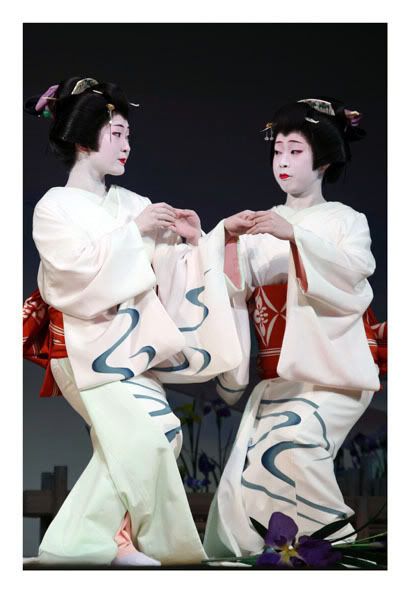


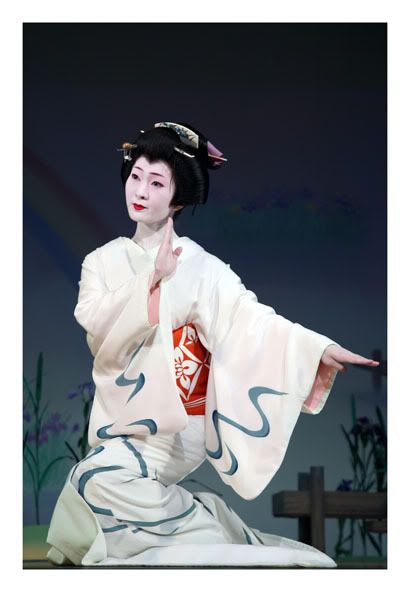

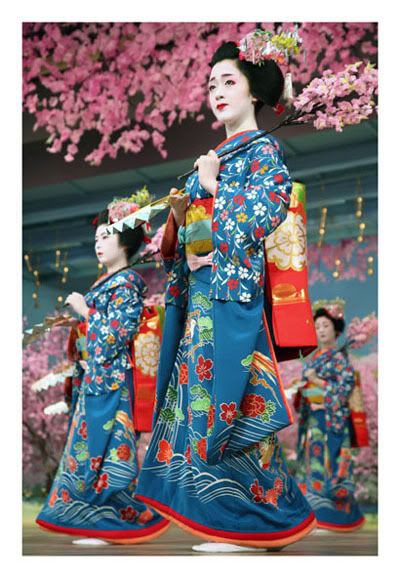
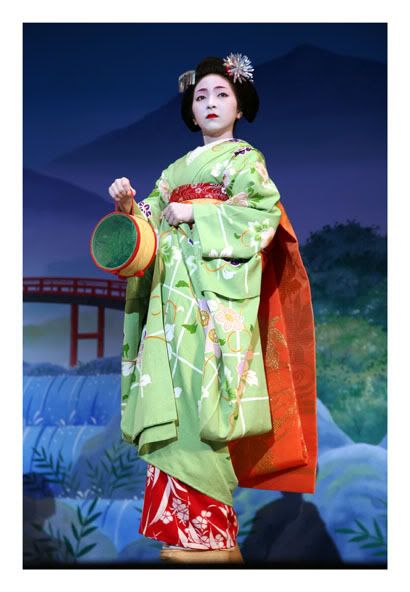
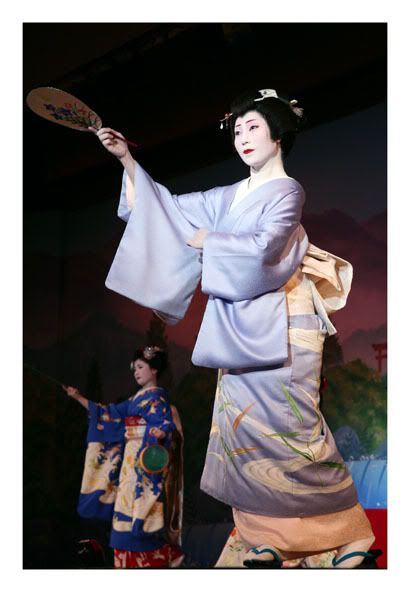



Lucky Gaijin!